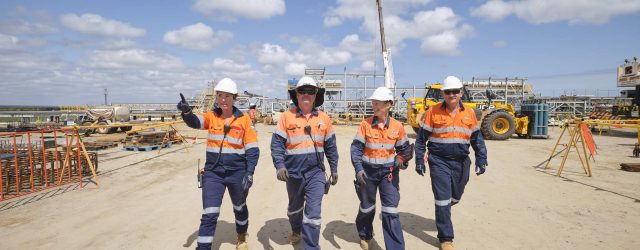2023 Reflections
Posted: 12th January 2024
Posted in: Blog

Posted: 12th January 2024
Posted in: Blog
As we wrap up our dance with challenges in 2023, it’s clear we need more than just a change of partners; we need a whole new choreography. The $120 billion project review and the unexpected drama of IR reform kept us on our toes, but solutions seemed stuck in a traffic jam, leaving us on a hamster wheel of good intentions, going nowhere fast.
The construction industry is operating on an outdated system. It encourages short-term focus and lacks room for innovation. The commercial environment actively discourages the long-term planning needed to upgrade and boost productivity.
To break free from this hamster wheel, contractors and consultants need to be incentivised to invest in and adopt innovative solutions. At the same time, clients need to play a role in actively supporting and encouraging innovation in their projects. However, given the industry’s size and number of clients, we will only get substantial change if the biggest buyer of them all, state and federal governments, lead the way.
This year, the Australian Constructors Association (ACA) brought forward a proposal for the industry reset. We proposed that the government develop a comprehensive national approach to construction productivity reform—a National Construction Strategy. This strategy would be a collaborative effort between government, industry and unions, spanning sectors and political boundaries. The big idea is to break through the barriers that are preventing us from implementing the actions that we all know will improve productivity.
Outlined in our report, Nailing Construction Productivity, three key elements define the proposed strategy. The star of this show is project procurement. Developing a nationally consistent set of procurement principles and standardised contracts would enhance efficiency and provide a conducive environment for productivity improvements.
The second element of the strategy is a data alliance. We’re talking about developing and tracking simple metrics that will show if we are heading in the right direction to become more productive. Infrastructure Australia could potentially serve as an independent body for managing this data alliance.
The final component involves articulating a national strategic framework to lift the construction industry’s overall skill level, including quickly re-skilling to adapt to evolving technologies and methodologies. And so, we’re not just building infrastructure; we’re building a construction dream team.
The Productivity Commission’s report highlighting Australia’s worst productivity growth in 60 years underscores the urgency of the strategy. Construction is a major economic powerhouse, contributing $150 billion directly and an additional $300 billion through the supply chain annually. It is clear to all that enhancing the industry’s productivity is crucial. Closing the productivity gap with other major industries could save $56 billion annually, providing the resources needed for current and future projects.
If the coming years are indeed destined to be ‘the defining decade’, as declared by Treasurer Jim Chalmers, Australia needs more than just rhetoric; it needs a strategic, coordinated effort to lift its game, and the construction industry is the place to start. I am optimistic that in 2024 we will see the creation of a 10-year National Construction Strategy and the start of a new, more coordinated dance towards a more sustainable and productive industry.
Opinion piece by Jon Davies, Chief Executive Officer, Australian Constructors Association
Originally posted via InsideConstruction – January 2024